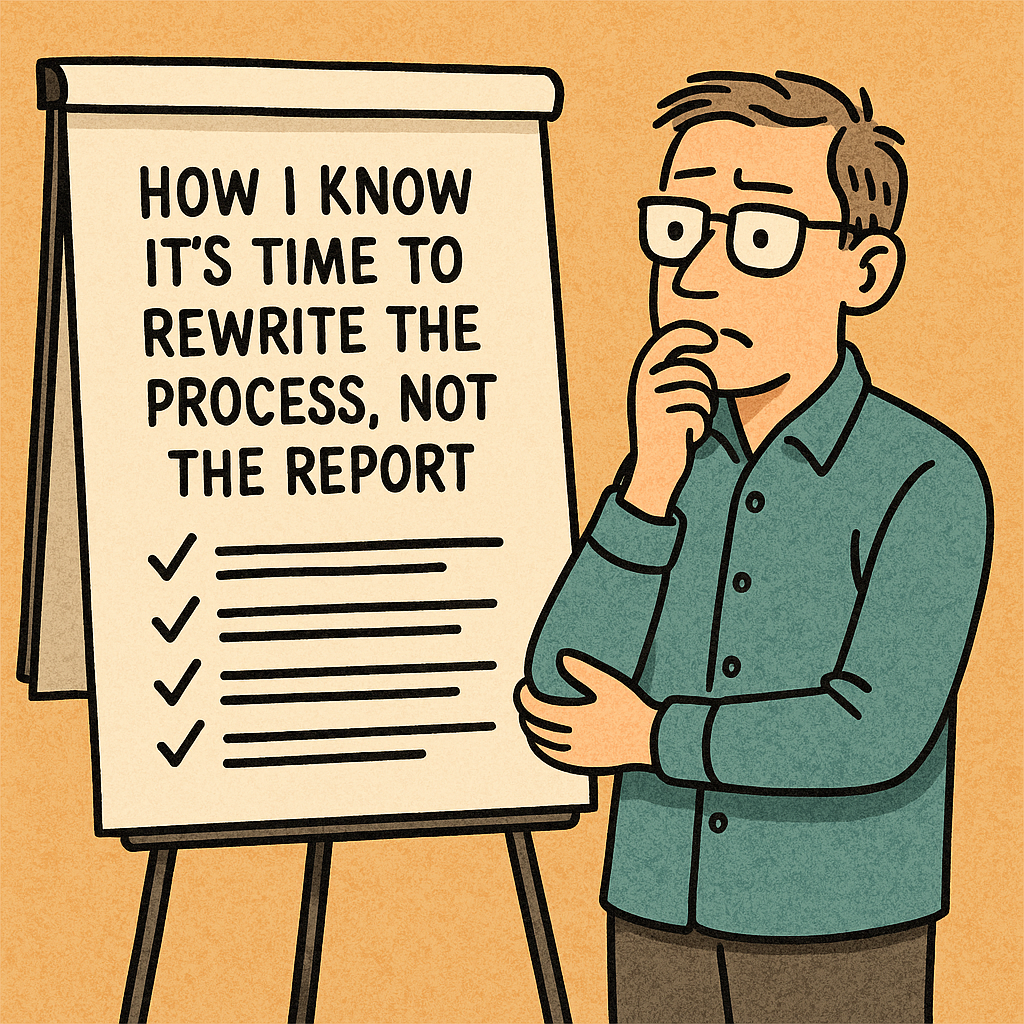I’ve been asked to “fix a report” more times than I can count. Sometimes it’s broken, sometimes it’s just confusing, and sometimes it’s neither — it’s just surfacing uncomfortable truths. But every so often, the problem isn’t the report at all.
It’s the process behind it.
Over time, I’ve come to recognise a few tell-tale signs that the real issue lives upstream, not in the final spreadsheet or dashboard. Here are a few of the most common:
1. It Takes Days to Pull the Data
If you’re manually collating figures from seven systems, applying caveats from email chains, and fixing the same column errors every month — the problem isn’t the report. It’s the process that feeds it. Good reporting shouldn’t rely on heroic effort.
2. No One Trusts the Numbers
When people keep asking “where did this come from?” or “why doesn’t this match my version?”, it’s often a sign that data is being interpreted, transformed, or cleaned differently at different points in the workflow. Consistency upstream matters more than polish at the output stage.

3. You’re Explaining the Same Thing Every Time
If the same explanation keeps cropping up in every meeting or commentary box, it might mean your data process is misaligned with what people actually need. Rather than clarifying the report, sometimes it’s better to redesign how you capture or define the data in the first place.
4. There Are Too Many Workarounds
If a report depends on hidden lookups, manual overrides, or mysterious “fix sheets,” it’s probably a sign that your process isn’t working as intended. Workarounds can solve a short-term problem — but they also mask deeper structural issues.
5. The Questions Have Moved On, but the Data Hasn’t
Sometimes, the data pipeline was built to answer a question that’s no longer relevant. People might still be asking for the report, but trying to extract new meaning from an old structure. When that happens, it’s worth stepping back to rethink both what you’re reporting and how you’re getting the data in the first place.
Reporting problems are rarely just technical. They’re usually signals that something upstream needs attention — a broken data flow, an unclear definition, a process that no longer reflects reality.
The good news? You don’t always need a shiny new tool. Sometimes the best fix is a quiet conversation, a documented field definition, or a small but intentional change to how data enters the system in the first place.